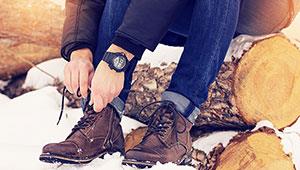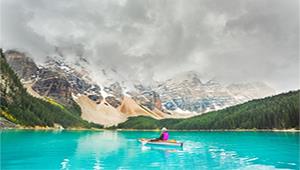3. Snowshoe Compatibility
You never know when the snow might get too deep to hike in, or deep enough that you have to work harder to hike through it. In this case, grab the snowshoes; they help you trek through a winter forest with ease. Look for an attachment point in the heel of the boots, which help you clip in.
More: How to Choose the Perfect Snowshoes
4. Room for Thick Socks
Shoes that are too tight reduce breathability and comfort; shoes that are too big can cause toe pain and allow excessive snow and water to spill in. The only way to truly test the size is to try on your boots with the socks you plan to wear, whether it's one pair or more.
5. Breathability
With thick waterproof materials and heavy insulation, some winter hiking boots aren't as breathable as they should be. However, breathability affects comfort and internal moisture, making it an important feature. Be sure your boots are made with one of these three materials that offer protection from water and exceptional breathability:
- Split-Grain Leather
- Nylon
- Gore-Tex
Keep these tips in mind when picking out your winter hiking boots and you'll be much happier when trekking through the snow.
More: 5 Convincing Reasons to Camp in the Winter
 Find a Campground at ReserveAmerica.com.
Find a Campground at ReserveAmerica.com.
- 2
- of
- 2
About the Author











Discuss This Article